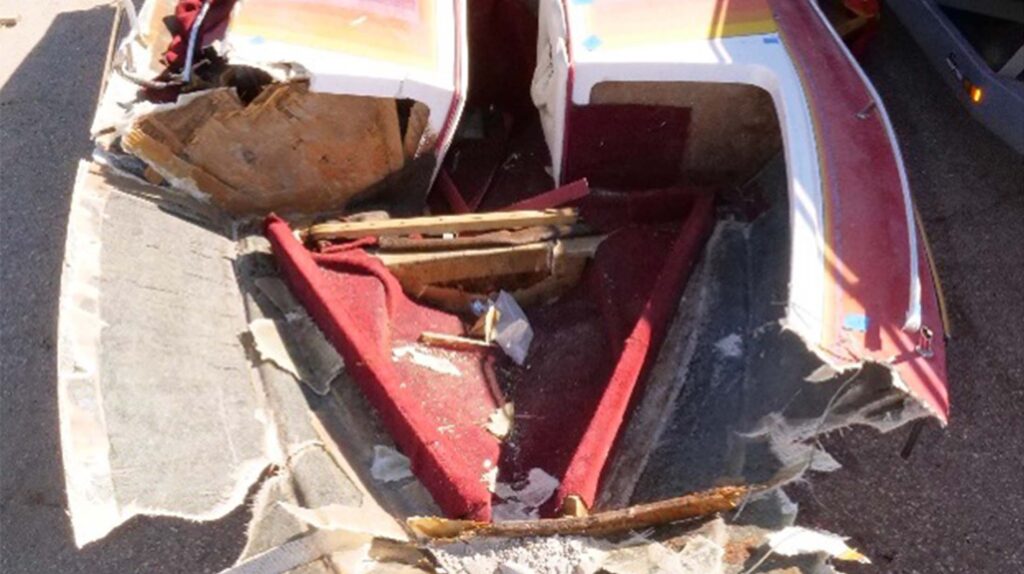
By CAPT Mark Poster, CMI
According to the way the Navigation Rules are written, if two vessels are underway (even if not making way) and a collision occurs, then violations can be attributed to both vessels. Most often, however, one vessel will have the majority of violations, or what is known as “causative fault”. It is up to the investigator to list all violations to each vessel in the accident report. By doing so, the courts will have a better idea of how to distribute upon each vessel blame in causing the collision, and how to appropriate the proper amount of responsibility to each based upon those violations listed. Rarely, only one vessel may be completely at fault.
The Navigation Rules differ greatly from traffic laws; there are no traffic lights, stop signs or lanes to stay in. All these provide for a “predictability” factor, so that other drivers have a pretty good idea of what actions to expect from each other. In a traffic collision where one vehicle is determined to have committed a “Failure to Yield” violation (such as disregarding a stop sign or pulling into traffic from a driveway or side street), then that vehicle is 100% at fault for causing the accident.
Here is one example of where 100% fault was determined to be on just one vessel while both were underway. A PWC operator, while traveling in a 10-mph speed control zone at full speed, and looking over his shoulder at the time of collision, ran over from astern a young girl kneeling while paddling her SUP (Stand Up Paddleboard) resulting in her death. She would have had no way to maneuver out of the way, even if she was aware of the oncoming vessel per Rule 5 Look-out.
This is another example with a different result. A 19-foot speed boat with three POB (Persons on Board) were going 30 mph. A 42-foot vessel was in the process of overtaking the 19-footer at 60 mph. The bigger, faster boat attempted passing at a much closer distance than was prudent, and when the smaller boat made a hard turn to port, a collision resulted with all three occupants on the 19-footer becoming fatalities.
The smaller vessel was required to maintain her speed and course per Rule 17 Action by Stand-on Vessel. This operator also failed to maintain a proper Look-out per Rule 5 prior to turning, which could have alerted him to the bigger, faster vessel’s presence. The 42-footer violated Rule 6 Safe Speed, Rule 7 Risk of Collision, Rule 8 Action to Avoid Collision, Rule 13 Overtaking, Rule 16 Action by Give-way Vessel, and Rule 34 Maneuvering and Warning Signals.
It is unknown why the smaller vessel turned, but past legal interpretations of the Rules account for unanticipated events, such as loss of steering, a physical incapacitation to the operator and hazard avoidance. Even though both vessels contributed to this collision, the faster vessel was found to be more at fault for the unsafe passing maneuver.
Beyond the three situations addressed in the Navigation Rules (Head-on, Crossing and Overtaking), the most common violations that may be identified are Rule 5 Safe Speed, Rule 6 Look-out, Rule 7 Risk of Collision and Rule 8 Action to Avoid Collision. Additionally, for Crossing and Overtaking, we will have Rules 16 Give-way and 17 Stand-on. For Head-on situations, also known as meeting, both vessels are Give-way, neither being Stand-on.
Rules 6 and 7 are similar in that they are both risk assessment and risk management mitigation measures. A proper and effective Look-out will not only help determine the other vessel’s course and speed, but also performs as a risk of collision assessment, and can alert the operator of changing sea conditions or any other hazards that the vessel may encounter.
The term Look-out does not merely refer to a person’s performance of this duty, usually the operator on small recreational vessels, but serves as an integral functional role in the vessel’s operation. The operator, as Look-out must include a vigilant 360-degree awareness of all dangers to navigation, and not be distracted. A vessel that is being overtaken may also be held responsible in part for failing to recognize they are being passed, by making a change of course during the passing maneuver.
An improper Look-out combined with unsafe speed is the cause of many accidents. Visual obstructions are not an excuse. In this case, the investigating officer only mentioned Overtaking, failing to mention all the other Navigation Rules violations to each operator.
As mentioned earlier, the investigator must include all Navigation Rules violations attributable to each vessel, to make a full evaluation of causative fault to each operator. Accident investigators should provide a complete picture for those reading and depending on our reports for a proper judgement.